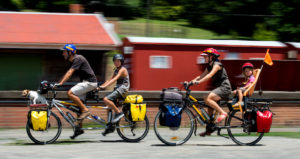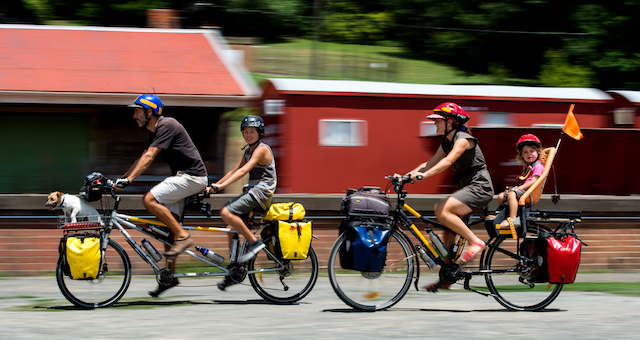Working With and Learning From Nature
Taking Permaculture on the Road

Patrick Jones is a poet, Permaculture practitioner and the co-author of the book The Art of Free Travel: A Frugal Family Adventure. In 2013, Patrick and his partner Meg Ulman embarked on a 14 month, 6,000 km journey by bike, cycling along Australia’s East Coast from Daylesford to Cape York. They brought along their sons, Woody and Zephyr, and their dog, Zero.
Along the way they documented many of the edible wild plants of Australia. They left knowing about 100 species (of mostly plants) and came back knowing 256 species of plants, fungi, animals, and insects.
On their trip, Meg and Patrick wanted to apply Permaculture principles to travel, in essence to take Permaculture on the road. Practicing the art of “slow” travel, Meg, Patrick, and family, hunted, gathered, guerrilla camped, and bartered their skills for places to stay.
I interviewed Patrick from his home in Australia. You can hear the interview by clicking here. In our free-ranging conversation we talked about many of the native plants of Australia including the Yam Daisy- a tuber that is highly nutritious, delicious, and resilient. Patrick also shared his knowledge about pre-1788 indigenous Aboriginal land tending and some of the history and science that demonstrates reciprocal agrarianism across Australia pre-contact.
Here is a list of the Latin names of the plants, insects, fungi, and bush tucker that Patrick talks about in his interview.
Newly Naturalized Plants:
Mallow – Malva
Flatweed – Hypochoeris
Dandelion – Taraxacum
Plantain – Plantago spp.
Purslane – Portulaca oleracea
Snakeweed – Stachytarpheta indica
Mango – Mangifera indica
Banana – Musa spp.
Coconut – Cocos nucifera
Newly Naturalized Mushrooms:
Slippery jack – Sullius luteus
Lawyers wig – Coprinus comatus
Saffron milk caps – Lactarius delicious
Traditional Bush Tucker:
Bloodwood apple – Cystococcus spp.
Green tree ant – Oecophylla smaragdina
Murnong (yam daisy) – Microseris spp.
Burdekin plum – Pleiogynium timorense
Pigface – Carpobrotus spp.
Tropical almond – Terminalia catappa
Peanut tree – Sterculia quadrifida
Mud whelk – Polymesoda coaxans

Pingback: The Art of Free Travel with Patrick Jones | Sustainable World Radio
I muddled up my maths in the interview regarding the history of bread in Australia. Archeological evidence puts bread making in Australia going back at least as far as 32,000 years, making Aboriginal people the first bread makers.(Ref: ‘Dark Emu: Black Seeds’, Bruce Pascoe 2014)
Thanks Jill!
Patrick